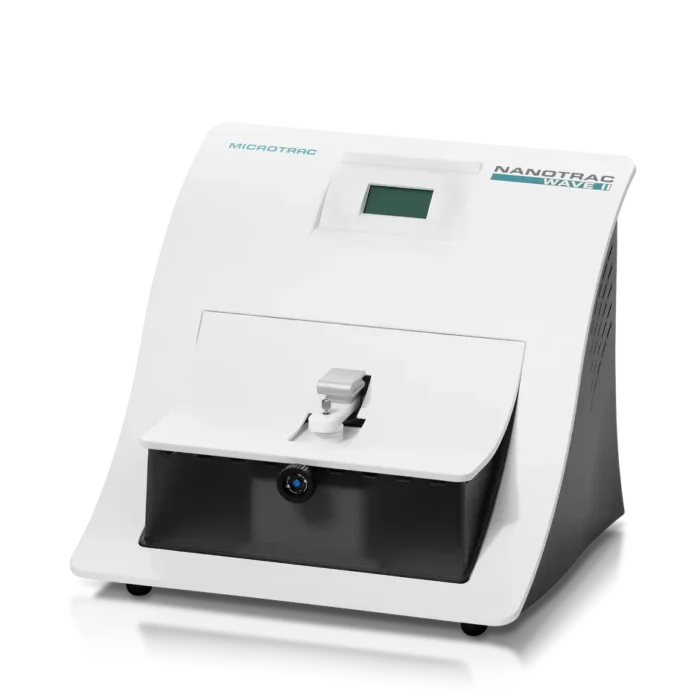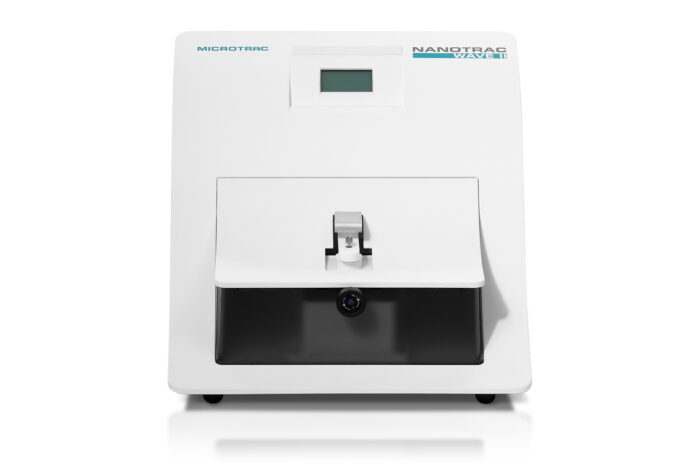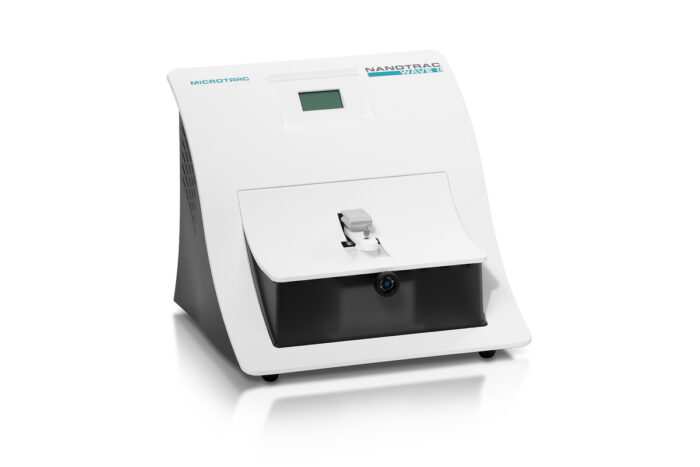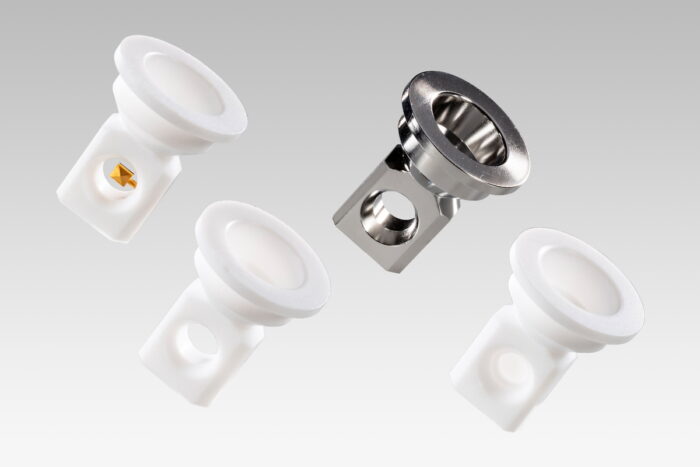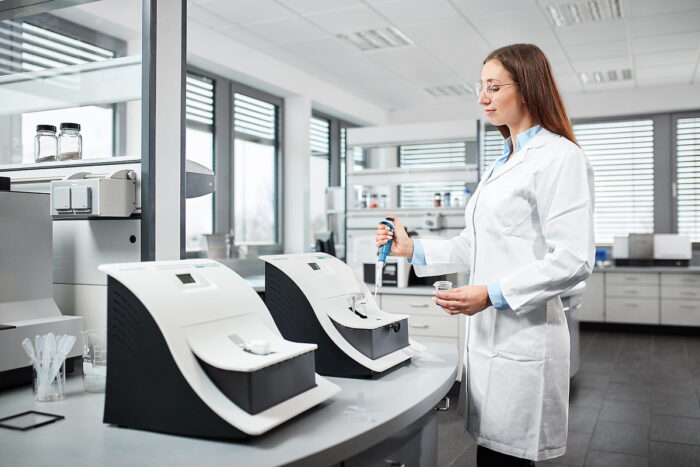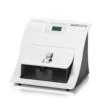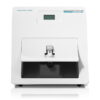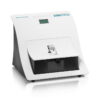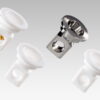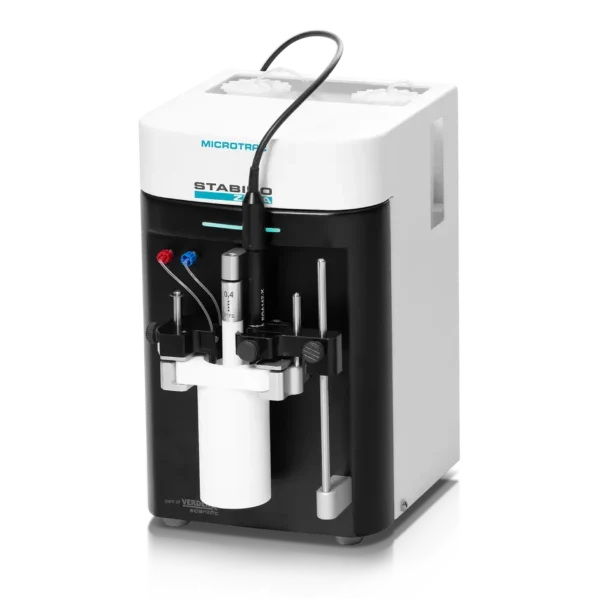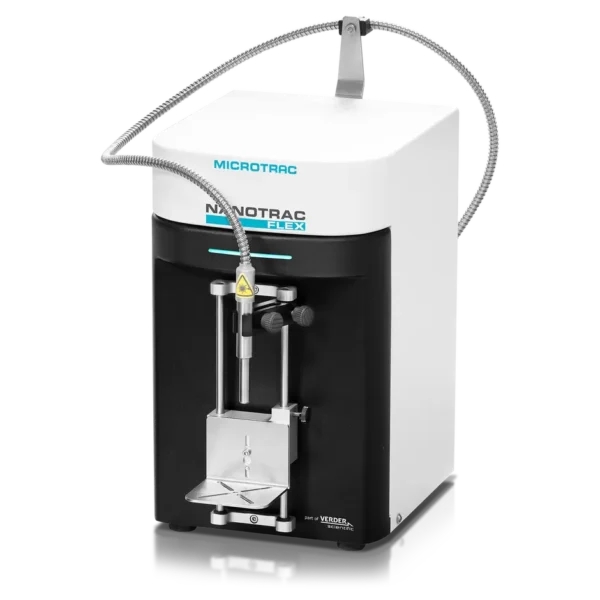Microtrac’s NANOTRAC Wave II / Zeta is a highly flexible Dynamic Light Scattering (DLS) analyzer which provides information on particle size, zeta potential, concentration, and molecular weight. It allows faster measurements with reliable technology, higher precision, and better accuracy. All of this combined into a compact DLS analyzer with a revolutionary fixed optical probe.
With the unique and flexible probe design and the use of the Laser Amplified Detection method in the NANOTRAC Wave II / Zeta, the user is able to choose from a wide array of measurement cells that satisfy the needs of any application. This design also allows measurements of samples over a wide concentration range, monomodal or multimodal samples, all without prior knowledge of the particle size distribution. This is made possible through the use of the Frequency Power Spectrum (FPS) method instead of classical Photon Correlation Spectroscopy (PCS).

Nanoparticle Size Analyzer NANOTRAC WAVE II
- 180° backscatter DLS setup
- Stable fixed optics sample interface – no adjustments required
- Rapid field reversal prevents electro-osmosis
- Robust mobility calculation as a function of power spectrum ratio
- High concentration zeta potential measurements
- Sample concentration and molecular weight determination
- Universal solvent compatibility
- Frequence Power Spectrum calculation model instead of PCS
- Laser Amplified Detection – high signal to noise ratio
Nanoparticle Size Analyzer NANOTRAC WAVE II / ZETA Accurate Measurement of Colloidal Systems
All NANOTRAC WAVE series analyzers use the same revolutionary probe technology for DLS measurements. Utilizing our Laser Amplified Detection method, repeatable and stable particle size measurements for all types of materials are provided.
The NANOTRAC WAVE II series can also calculate the sample concentration through the use of the power spectrum and the resulting loading index. Depending on the distribution calculation, concentration will be displayed in appropriate units such as cm3/ml or N/ml. It is also possible to calculate the molecular weight by either the hydrodynamic radius or a Debye plot.
The NANOTRAC WAVE II particle analyzer has multiple reusable samples cells in different sizes. There is a standard and micro volume Teflon cell for a wide range of materials. For more difficult to clean samples, there is a standard volume stainless steel cell, as well as a large volume stainless steel cell.
The NANOTRAC WAVE II Zeta particle analyzer has a special reusable zeta cell with an electrode for running zeta potential measurements. Sample cells listed for the Wave II are also compatible with the zeta model.
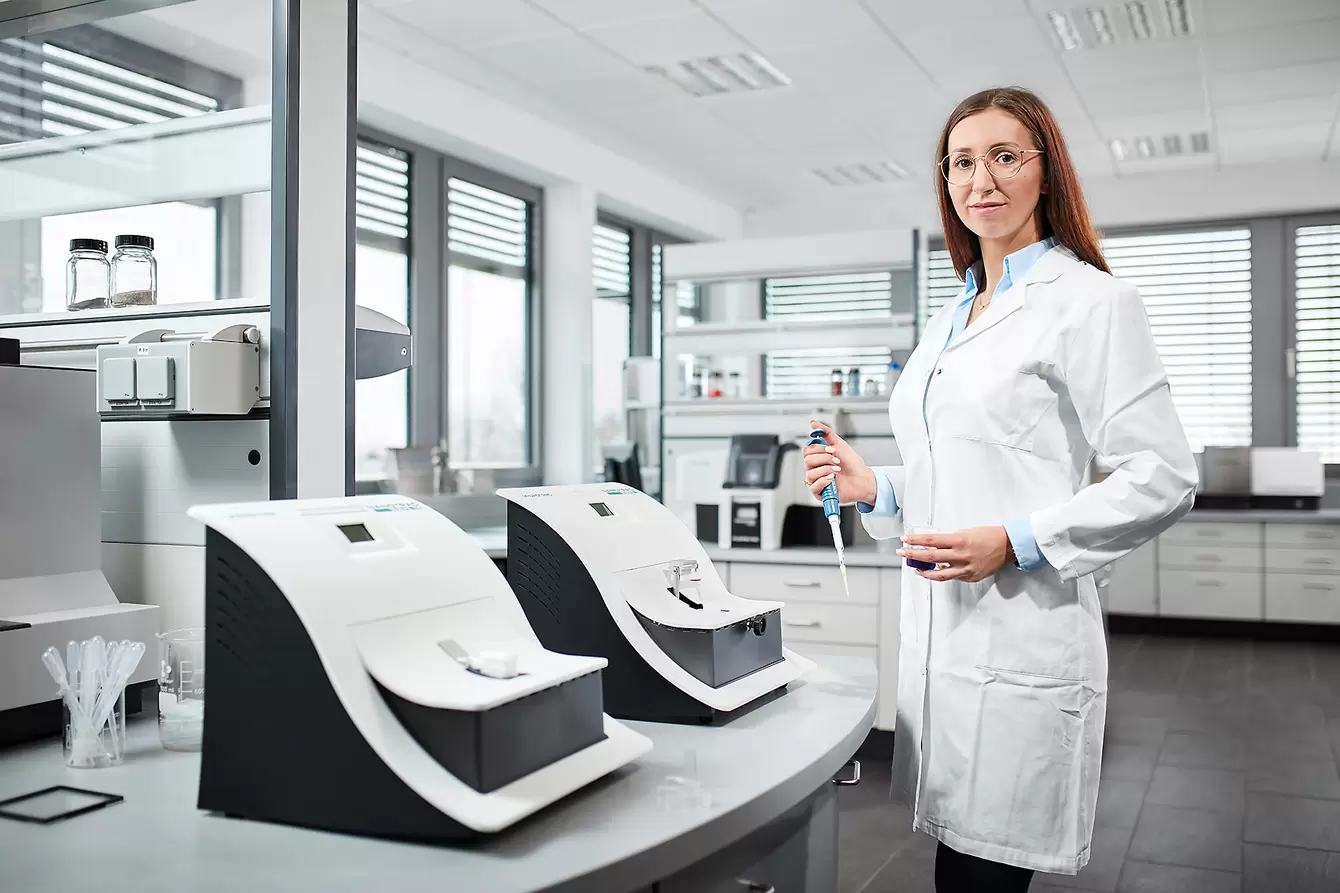
Nanoparticle Size Analyzer NANOTRAC WAVE II / ZETA Ideal for Nanoparticle & Zeta Potential Analysis

The measurement of zeta potential in the NANOTRAC WAVE II particle size analyzer takes advantage of the same Frequency Power Spectrum methodology used for measuring nanoparticle size distributions. The same stable optics sample interface means no adjustments are required. The backscatter and laser amplified detection signals are collected as in the size measurement, and the rapid sequencing of applied electric fields prevents electroosmosis. The optical probe surface is coated to provide electrical contact with the sample. Two probes are used, one to determine the polarity of the particle charge at the slipping plane and one to measure the mobility of the particles in an electric field. Polarity is measured in a pulsed electric field, while mobility is measured in a high frequency sine wave electric field excitation. The zeta cell has two detection probes, on opposite sides, to detect polarity and mobility.
From the linear frequency power spectrum distribution (PSD), the Loading Index (LI), which is proportional to particle concentration, can be calculated. Loading Index values provide a single number for total scattering that can be used to determine particle mobility in microns / sec / volt / cm and particle polarity as + / -, positive or negative.
Measuring mobility and zeta potential begins by measuring the PSD and determining the LI with the excitation off. Then the PSD is measured with the high frequency sine wave on and a ratio is taken. Polarity is determined by measuring the LI before and after pulsed DC excitation. A ratio of LI after the excitation divided by LI before excitation of less than one is a positive polarity (concentration decreasing) and a ratio greater than one is negative (concentration increasing) for a positively charged probe surface.
Mobility = C x (ratio of [PSD(on) – PSD(off)] / LI(off)
Zeta Potential ∝ Mobility
Nanoparticle Size Analyzer NANOTRAC WAVE II / ZETA Typical Applications
Versatility is a great strength of Dynamic Light Scattering (DLS). This makes the method suitable for a variety of applications in both research and industry, such as pharmaceuticals, colloids, microemulsions, polymers, industrial minerals, inks and many more.

pharmaceuticals
- pharmaceuticals
- inks
- life sciences
- ceramics
- beverages & food
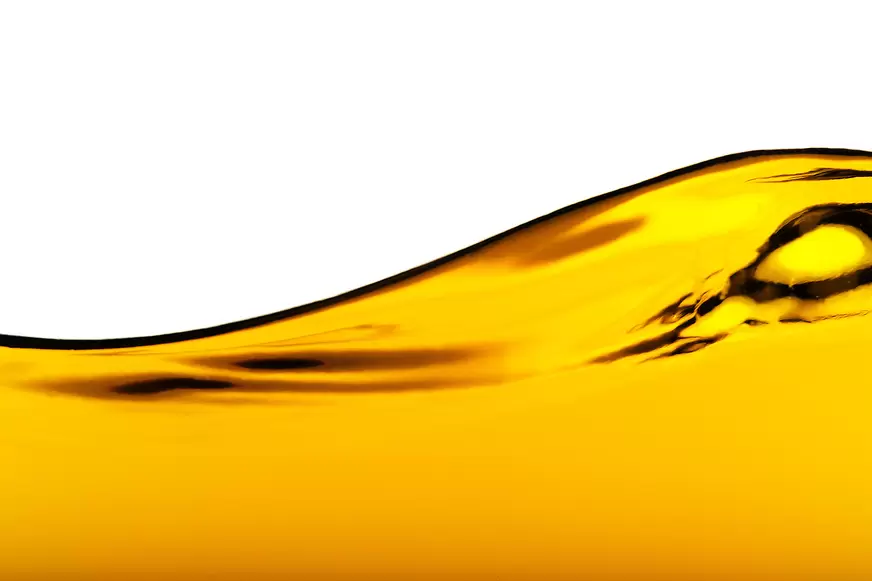
emulsions
- colloids
- polymers
- microemulsions
- cosmetics
- chemicals

steel
- environment
- adhesives
- metals
- industrial minerals… and many more!
Nanoparticle Size Analyzer NANOTRAC WAVE II / ZETA Functional Principle
The optical bench of the nanoparticle size analyzer NANOTRAC WAVE II is a probe containing an optical fiber coupled with a Y splitter. Laser light is focused on a volume of sample at the interface of the probe window and the dispersion. The high reflectivity sapphire window reflects a portion of the laser beam back to a photodiode detector. The laser light also penetrates the dispersion and the particle’s scattered light reflects at 180 degrees back to the same detector.
The scattered light from the sample has a low optical signal relative to the reflected laser beam. The reflected laser beam mixes with the scattered light from the sample, adding the high amplitude of the laser beam to the low amplitude of the raw scatter signal. This Laser Amplified Detection method provides up to 106 of times the signal to noise ratio of other DLS methods like Photon Correlation Spectroscopy (PCS) and NanoTracking (NT).
A Fast Fourier Transform (FFT) of the Laser Amplified Detection signal results in a linear frequency power spectrum which is then transformed into logarithmic space and deconvoluted to give the resulting particle size distribution. Combined with Laser Amplified Detection, this frequency power spectrum calculation provides robust calculation of all types of particle size distributions – narrow, broad, mono-modal or multi-modal – with no need for a priori information for algorithm fitting as it is for PCS.
The Laser Amplified Detection method used in Microtrac particle analyzers is unaffected by signal aberrations due to contaminants in the sample. Classical PCS instruments need to either filter the sample or create complicated measurement methods to eliminate these signal aberrations.
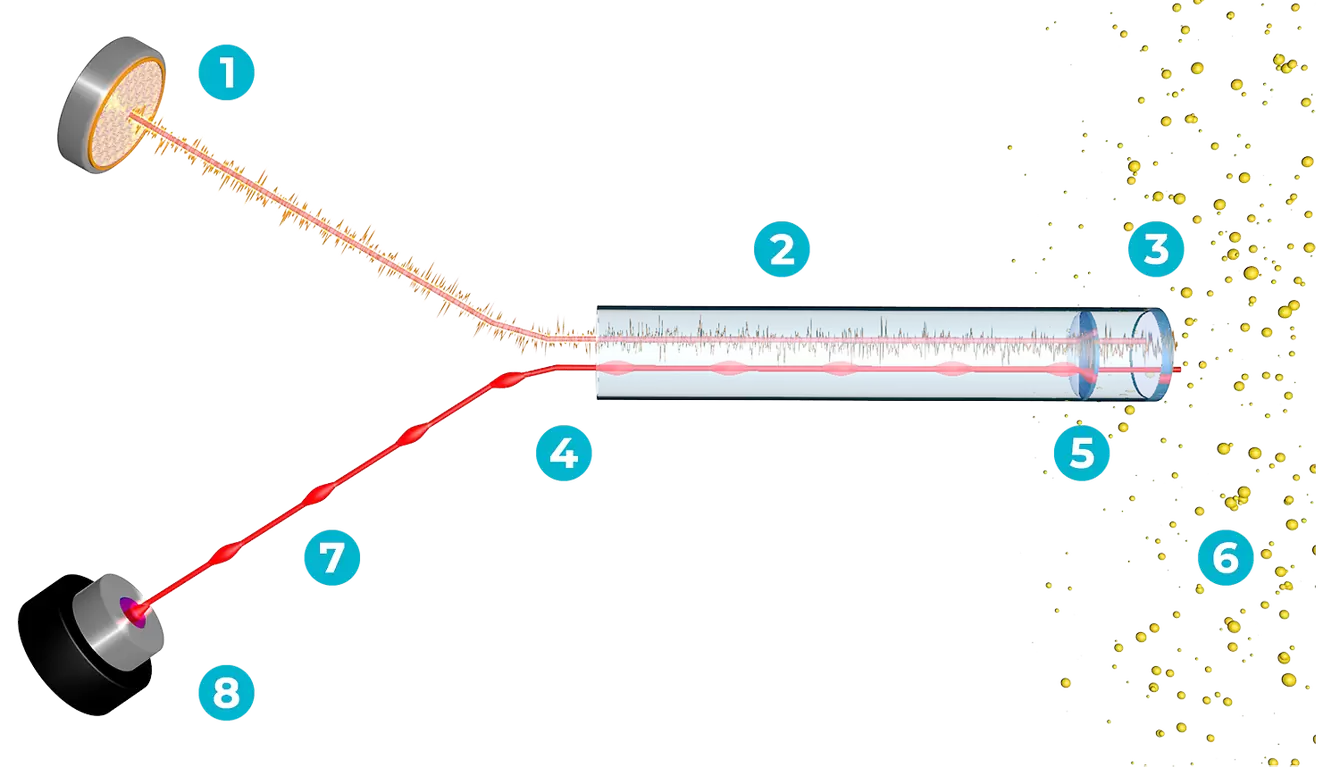
1. Detector | 2. Reflected laser beam & scattered light | 3. Sapphire window | 4. Y-beam splitter | 5. GRIN lens | 6. Sample | 7. Laser beam in optical fiber | 8. Laser
Iterative Particle Size Calculation from Power Spectrum

1. Estimate size distribution | 2. Calculate estimated particle size | 3. Calculate error in particle size | 4. Correct estimated distribution | 5. Repeat 1-4 until error is minimized | 6. Minimum error distribution is best fit
Content may be subject to modifications or corrections

